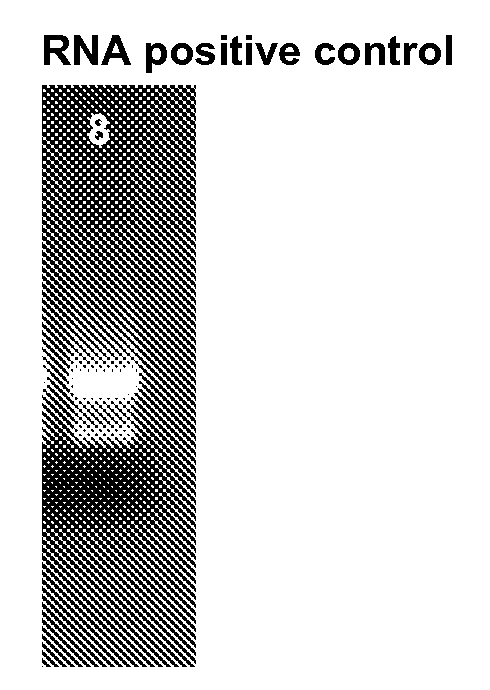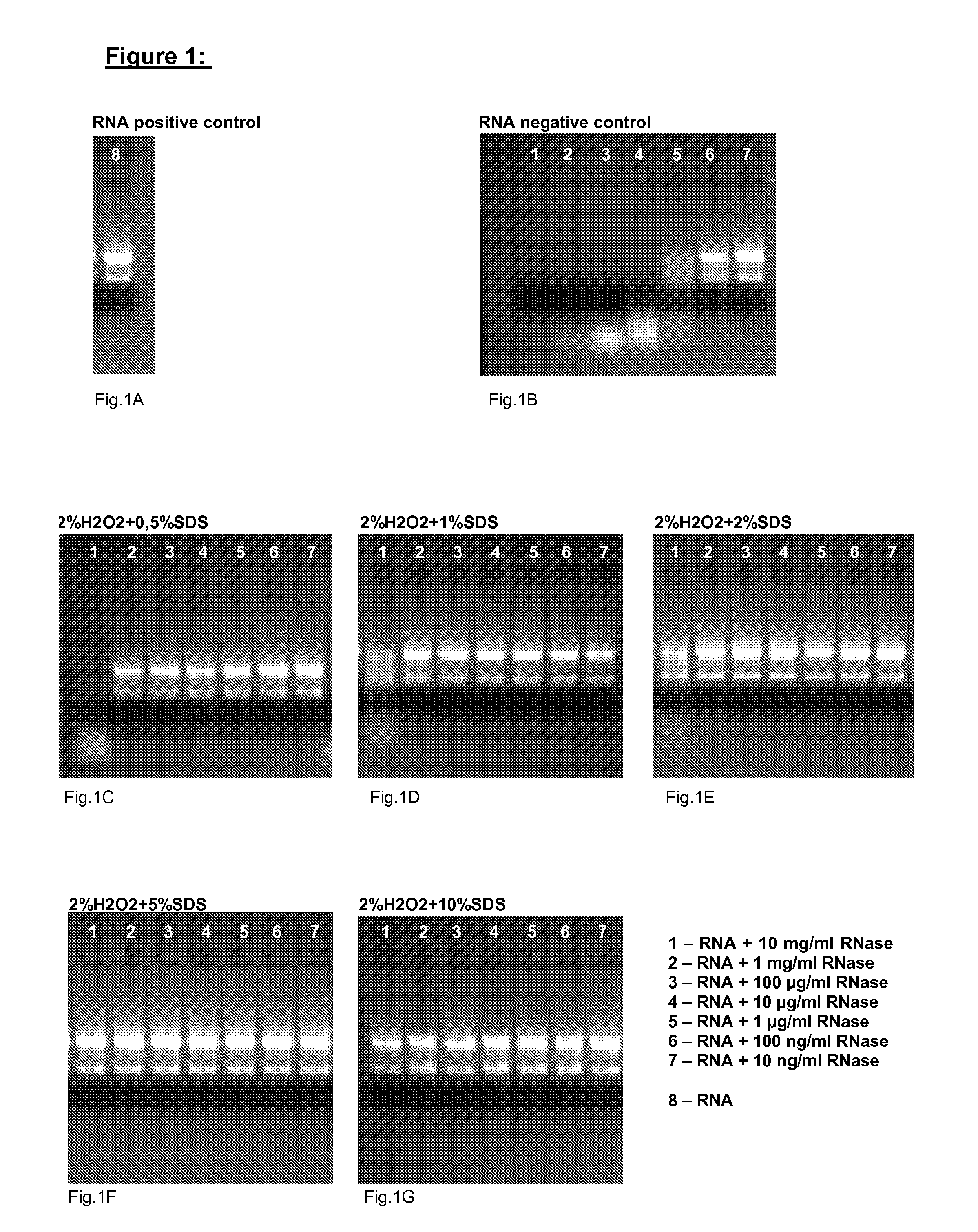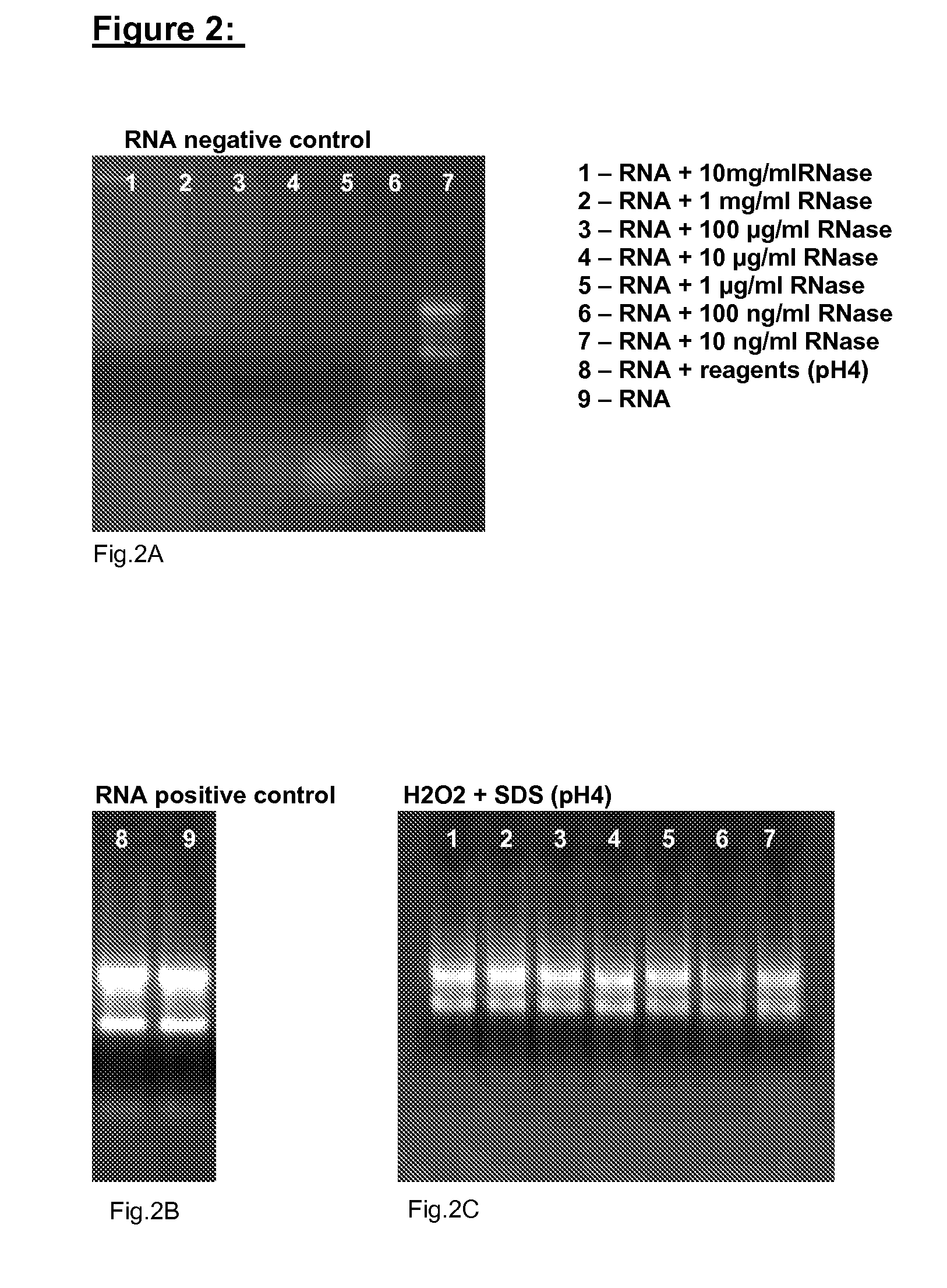Permanent inactivation of nucleases
- Summary
- Abstract
- Description
- Claims
- Application Information
AI Technical Summary
Benefits of technology
Problems solved by technology
Method used
Image
Examples
example 1
[0023]The following example is adequate for testing the efficiency of the disclosed method. Briefly, after contamination with ribonucleases the reagent according to the invention is applied to the contaminated equipment. RNA probes contacted thereafter with the cleaned equipment are no more decomposed.
[0024]Detailed Protocol:[0025]a) At first, a ribonuclease contamination is intentionally effected by adding 20 μl of differently concentrated ribonuclease solutions [10 mg / ml, 1 mg / ml, 100 μg / ml, 10 μg / ml, 1 μg / ml, 100 ng / ml, 10 ng / ml] to different reaction tubes and incubating the tubes for 15 min at RT.[0026]b) Subsequently, the ribonuclease solutions are removed and the reaction tubes—are air-dried.[0027]c) 30 μl of the reagent according to the invention, comprising 2% H2O2 and different amounts of SDS (0.5-10%) pH 4, are added to each reaction tube and incubated for 5 min at RT.[0028]d) Subsequently, the reagent is removed and the reaction tubes are air-dried.[0029]e) 10 μl of a 0....
example 2
[0034]The following example provides another way for testing the efficiency of the disclosed method. Briefly, RNA and the reagent according to the invention are added to reaction tubes. Subsequent RNase contamination of the RNA and reagent does not lead to the decomposition of the RNA.
[0035]Detailed Protocol:[0036]a) 4 μl of a 4 μg / μl RNA solution (prepared in ribonuclease-free water) are added to different reaction tubes[0037]b) 4 μl of a reagent according to the invention, comprising 10% SDS and 30% H2O2, pH=4, is added to the reaction tubes and incubated for 5 min at RT.[0038]c) Subsequently, 1 μl of differently concentrated ribonuclease solutions [10 mg / ml, 1 mg / ml, 100 μg / ml, 10 μg / ml, 1 μg / ml, 100 ng / ml, 10 ng / ml] are added and incubated for 15 min at RT.[0039]d) After adding 3 μl of a blue RNA marker, the solutions are tested on a 1.2% formaldehyde gel.
[0040]In FIG. 2A, a control gel is displayed, wherein step b) was left out so that no reagent according to the invention was ...
PUM
| Property | Measurement | Unit |
|---|---|---|
| Temperature | aaaaa | aaaaa |
| Temperature | aaaaa | aaaaa |
| Time | aaaaa | aaaaa |
Abstract
Description
Claims
Application Information
 Login to View More
Login to View More - R&D
- Intellectual Property
- Life Sciences
- Materials
- Tech Scout
- Unparalleled Data Quality
- Higher Quality Content
- 60% Fewer Hallucinations
Browse by: Latest US Patents, China's latest patents, Technical Efficacy Thesaurus, Application Domain, Technology Topic, Popular Technical Reports.
© 2025 PatSnap. All rights reserved.Legal|Privacy policy|Modern Slavery Act Transparency Statement|Sitemap|About US| Contact US: help@patsnap.com



